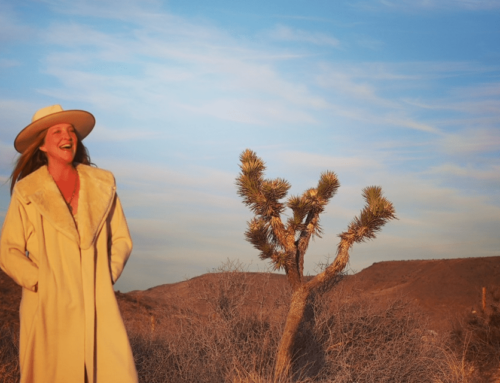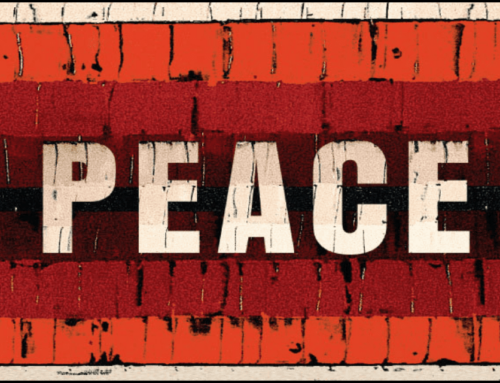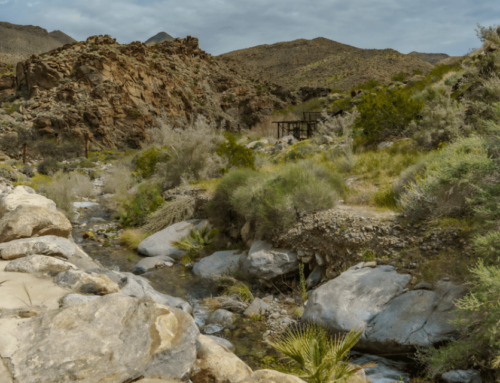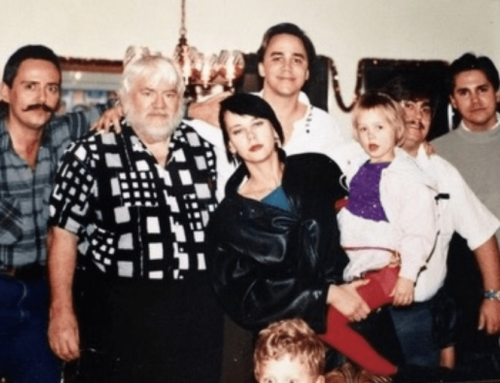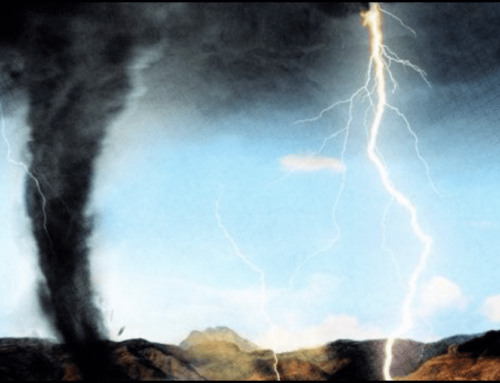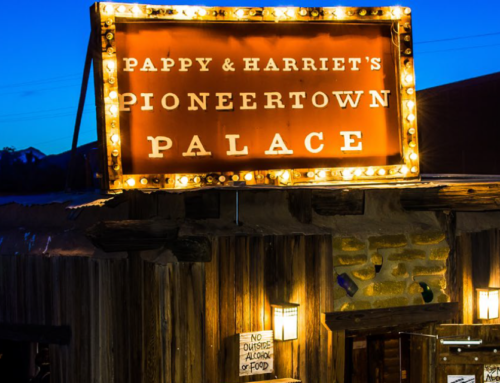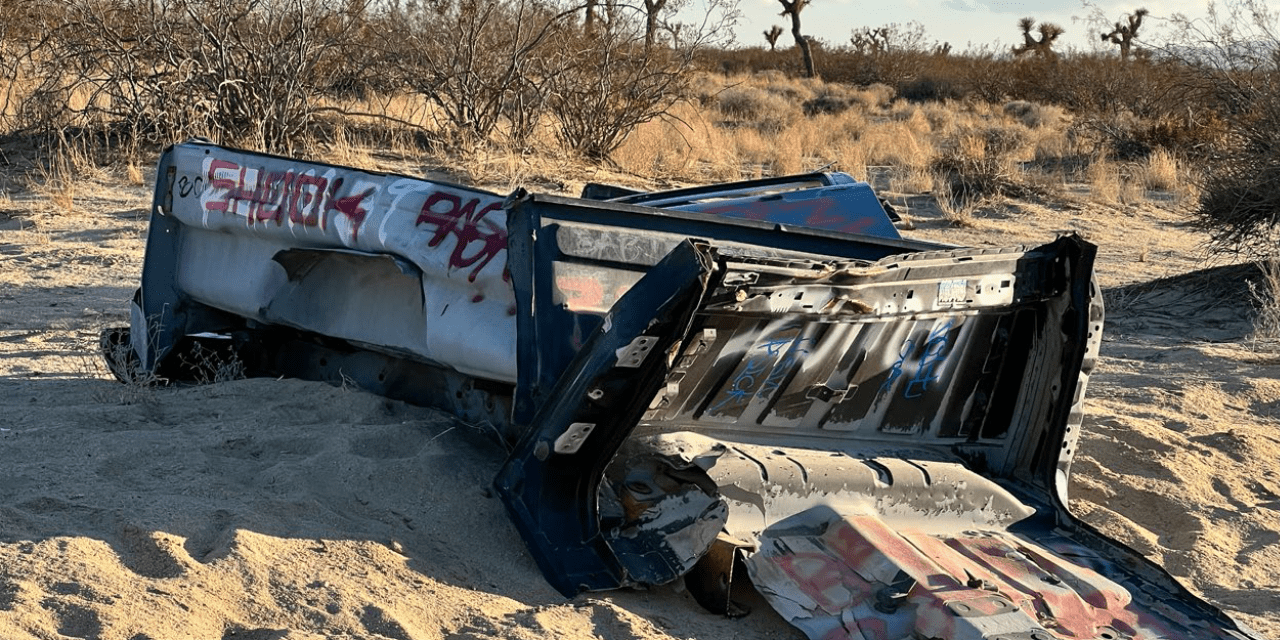
DESERT DUMPING: The Solutions Are Within Our Reach
By Monique A. LeBleu
Those who have never visited or stayed extensively in the gateway communities surrounding Joshua Tree National Park might never truly understand why someone would call this desert home. For those who have, it’s magical. Its varied and wide-open landscapes, fragrant air, vibrant and colorful sunrises and sunsets, and dark nights of brilliantly star-filled skies are like none other. Natives can be very fierce in their defense of this unique land, especially when they see it disrespected or defiled. Sadly, this happens much too often. Whether due to lack of resources, apathy, or simple lack of respect for the land and desert life that inhabits it, some historically less traveled areas of our high desert areas regularly fall victim to large-scale illegal trash dumping.
A San Bernardino County Report for 2022 provided a count of 2,389 unsheltered homeless in incorporated areas. Families and individuals are finding home deep in the desert. Being miles away from other resources – such as access to fresh water, toilets, sewer outlets, and trash collection – increases the volume of trash and waste run-off. Whether due to death or dereliction, these abandoned encampments often become a magnet for major trash dumping sites where car thieves and others abandon stripped vehicles, furniture, tires, large home appliances, and other trash—all which costs money to dispose of properly.
These encampments are not the only source of dumping. Trash and large-scale dumping can be found in deep-desert off-path short-term vacation rentals where guests and travelers seek the unique beauty of the desert, but feel free to act with abandon. Property owners sometimes neglect to dispose of guest trash themselves or high winds blow off trash only to gather and collect around surrounding desert plant life.
Colin Sauter, one of our hometown hero volunteers, frequently combs the high desert areas near his home and beyond to pick up other people’s trash. In his spare time outside of his day job in construction, Sauter, and his wife, Jill Steiner, pick up approximately a ton of trash each month in their own truck hauler and pay at local licensed dumpsites to dispose of it. According to Sauter, most of the dumping they find is largely around abandoned encampments, but also at short-term vacation rentals.
Sauter and his wife, who have been doing various of kinds of volunteer trash search and its proper disposal and recycling for years, formed the non-profit, Desert Cleanse Project, to allow others to donate or volunteer in clean-up efforts. Through the non-profit, they alone or with other groups, create volunteer fueled clean up events. Companies donate goods and funds to help them with their efforts in the clean-up and hauling of large-scale trash, as well as with some dumpsite and disposal fees. For scheduled events, such donations can include providing hot food, swag goodies, and gift certificates for participants.
Although he acknowledges that his volunteerism is strongly fueled by a long-standing desire to be of service and to care for the desert he calls home—a task he often takes on by himself in temperatures that scorch as high as 112 degrees or below freezing— Sauter expressed frustration at the daunting, ongoing, Sisyphus-like task of addressing the neglect and dumping. He finds it especially hard when paying other high financial costs to do it.
“I’ve wrecked two trucks and four trailers doing this,” said Sauter. “I’ve put maybe 30-grand into picking up trash in the last five or six years. It gets expensive. But it was also really cool when the community came together and gave us a trash trailer.”
“I pick up 25 tons of trash a year by myself, and on average, about 500 to 700 tires a year,” he continued “So that’s what I do, and that comes out of my pocket or through small donations that we get from people.”

The proper disposal of vehicles is not only expensive, it also requires the DMV to remove a vehicle from their system. Therefore, vehicles that have been stolen and abandoned are often left deep in the desert or even just outside of dumpsites. Sauter said he has picked up abandoned vehicle shells and parts of cars and broken them up for proper disposal where recycling is possible, which takes time. Sometimes recycling them justifies the cost of the haul. But lately the prices for metal have gone down. As an example of cost and effort, Bailey’s Towing and Dispatch in 29 Palms requires that you have a pink slip for them to dispose of a towed vehicle. Sometimes they’ll pick up an abandoned vehicle within a certain radius (only non-RVs), at a base rate of $100- $120. But for vehicles abandoned in the desert, a four-wheel-drive towing vehicle is required which starts at $250 per hour to tow. For disposal, there are additional DMV and other fees which are based on a variety of other factors.
Off-road and other desert sport utility groups have often been criticized for the damage their vehicles can do to the desert. But some individuals and groups have formed alliances to help, and not further injure, the lands they enjoy. Clean-up parties are organized where volunteers can come to clean and play. These groups put in elbow grease and time into planned events, such as the “California 300” and “Hodge Road Outdoor Shooting Area” clean up events in Barstow.
Clean Dezert, whom Sauter and Steiner have also worked with for such clean ups, also finds multiple sponsors to donate goods and hot meals during these events from local business heroes like JT Country Kitchen, Desert Taco, and $5 Pizza Place. Clean Dezert indicated on their Facebook page that they and their volunteers picked up 72,000 pounds of trash this year alone.
Desert Cleanse Project’s joint cleanup event with Clean Dezert, will follow the King of the Hammers (KOH) offroad sports event in Johnson Valley that occurs annually. This clean-up event is scheduled for February 18, 2023, which follows the racing event where many sponsors have stepped up to provide for those who volunteer. Sauter alone has gathered donated accessories and gift certificates from various companies worth up to $8,000 for raffle and other prizes. The plan is to clean the off-road trails like Chocolate Thunder, Turkey Claw, Back Door, and likely Cougar Buttes that are used during KOH.
Last year, another such non-profit that cleans around off-road events, Tread Lightly, reported that during and after the KOH event they had collected, “in total, 6,075 lbs. of trash…from the areas throughout the week. Most days, 20 volunteers or more from the off-road community showed up to help clean up.”
Another form of clean-up that volunteers like Sauter and Steiner do is graffiti removal found on desert rock formations, including that of local landmark, Giant Rock boulder, in Giant Rock Canyon just a few miles above Landers. According to the on-line Joshua Tree Visitors Guide, the landmark boulder and its “chip” cover approximately 5800 square feet of ground and is seven stories high.

Organized by Karyl Newman and Blightsites this last September, they, along with other organizations such as Positional Projects, High Desert Keepers, and individual volunteers, participated in the 7th Annual “Stories and Stewardship” clean-up event at Giant Rock. This event is done in conjunction with local preservation organizations and agencies such the Mojave Desert Land Trust (MDLT), Bighorn-Desert View Water Agency, and the City of Landers.
The process using the viscous solvent that specifically targets porous surfaces took about a day to spread on the rock and chip’s surfaces, and then a day to power wash off, he said. But for volunteers like Sauter, the time and the cost and the effort for him don’t outweigh the intangible benefits to his volunteerism. “If I help other people, it makes me happy. You know? I try to help people; I try to help the environment.”
Where individual clean up participation is not possible, San Bernardino County (SBC) residents can report illegal dumping or have the county help them with their own bulky item disposal. According to the SBC website, residents can request the free pick up of household bulky goods twice a year. Advanced scheduling is required, and residents can contact Waste Management at (800) 423-9986 at least 24 hours in advance of your regular collection day, up to 4 – 6 items per pickup, depending the size of the items. Yucca Valley and 29 Palms residents can schedule a pickup with Burrtec, 48 hours in advance by calling at (760) 365-2015.
The SBC organizes and schedules Neighborhood Community Clean Up events in unincorporated communities within San Bernardino County. According to their website, at “each clean up event, commercial trash dumpsters are placed in a central location within a community where local residents can bring bulky items to dispose of them at the site.” This includes waste tire and e-waste disposal.

For the 2020 calendar year, Code Enforcement organized and participated in 11 community clean up events throughout the County collecting a total of 120 tons of trash/bulky items, 80 tons of waste tires, and 8 tons of e-waste, according to their web page.
The recent community trash collection event that was held locally in Joshua Tree, on December 3, 2022, had over 30 participants, according to David Wert, the Public Information Officer at the SBC. The event collected just under a ton of trash and nearly 2.5 tons of tires. Future events for the 2023 calendar year are pending and will be posted on their Instagram and Facebook pages.
The Mojave Desert Land Trust (MDLT) uses its programs, volunteers, and grant funds to not only assist in keeping the desert clean, but also further its own mission to maintain the Mojave Desert’s wildlife, plant life, and overall ecological resiliency. MDLT was recognized at this year’s Joshuas for Outstanding Contribution to Our Ecology at the inaugural Joshuas Honors Gala. MDLT “stewards conservation lands to preserve habitats for native plants and animals, protect natural resources, and promote ecosystem resilience to climate change.”
MDLT’s Natural Resources Program Coordinator, Joelle Hazher, shared that their volunteers work to help restore any disturbed areas, improve trails, fences, and install signs and interpretive panels, clean up hazardous waste, monitor the desert tortoise, and control other invasive species. “We are additionally committed to ensuring the long-term health of the ecologically important landscapes,” shared Hazher. “With grant funding and other support, MDLT’s cleanup activities address illegal dumping, typically as part of a larger holistic project focused on stewardship and land management. Dumping kills vegetation, and all desert life depends on vegetation to thrive. MDLT is actively doing restoration of desert vegetation including collecting native seed and growing plants.”

“The desert tortoise is the desert species that is most vulnerable to illegal dumping,” Hazher continued. “Tortoises have been known to mistake trash, such as littered Mylar balloons or other common household trash, as forage. Once ingested, the debris remains in their digestive tract, giving them a false sense of fullness and causing them to eventually starve. Illegal dumps also attract wildlife such as coyotes, ravens, and other scavengers that are also predators of the desert tortoise.”
“All animal wildlife is currently at risk when it comes to desert dumping,” she stressed, “especially dumps that contain abandoned vehicles and other toxic waste: construction materials, old appliances, tires, chemicals, etc., Dumps containing toxic waste contaminates the soil. During heavy rain and flash flood events, these pollutants can get caught in the runoff and end up contaminating rivers, lakes and waterways that are supposed to provide essential habitat for plant and wildlife. ANY illegal dump poses a wildfire hazard, as well as a threat to human health and safety, as many of these dumps contain hypodermic needles, old medications, or human waste.”
In 2021 the MDLT “hauled 31.5 tons of trash off of MDLT lands,” according to a statement. Thus far in 2022, they have removed a total of 18.39 tons.
But where volunteerism or donations may not be possible, there is always one solution that is foolproof: the control you have over your own actions and the literal and carbon foot print you leave behind.
Since 1994, the nonprofit, Leave No Trace Center for Outdoor Ethics (LNT), has provided education for the public on how to leave no trace when visiting public lands and parks, or any place needing preservation and care. LNT also provides educational tools and training for National Parks and other organizations and partnerships on how they can provide such information to the public directly as well. LNT currently partners with over 700 “companies, land agencies, youth education programs, universities, non-profits, outfitters and guides, and their constituents to promote Leave No Trace” along with “65,000 trained volunteers, educators, and members across the country provide local Leave No Trace programs.

With all these programs in place, one might be tempted to think that the problem is handled. It isn’t. Without every business owner’s, landowner’s, resident’s, or visitor’s help, the problem will eventually outgrow these resources. If you don’t have the time, donate – every little bit counts. If you don’t have the money, give your time. Get the kids involved. There are few things that can create a stronger sense of pride and community.
To become an Advocate yourself go to https://invisiblepeople.tv/get-involved/, or call 909-501-0610 for copies of contact services or information on how those in need can apply for Housing Authority Department (HUD) hotel or other housing vouchers.
CONTACTS:
For more information on Leave No Trace, visit their
website at https://lnt.org/courses/online_awareness_take_action_html5/#/
To get more information about how to get involved in Desert Cleanse Project events email desertcleanseproject@gmail.com or visit their Instagram and Facebook pages for more information. https://www.facebook.com/DesertCleanseProject/
Clean Dezert – https://www.clean-dezert.org/
Tread Lightly – https://treadlightly.org/
Blightsites – http://blightsites.org/
#StewardshipandStories
Positional Projects – https://positionalprojects.org/
#StewardshipandStories
High Desert Keepers – https://www.highdesertkeepers.org/
For more information of the MDLT and how you can volunteer or donate, visit https://www.mdlt.org.
For information on reporting illegal dumping in the San Bernardino County visit https://lus.sbcounty.gov/code-enforcement-home/


For more information on Homelessness Advocacy in the San Bernardino County, visit https://wp.sbcounty.gov/dbh/sbchp/hpn/ for more information.
For a list of Emergency Grants Solution Providers to learn how you can volunteer or to provide the information for someone who may need it, go to
https://wp.sbcounty.gov/dbh/sbchp/wp-content/uploads/sites/2/2016/09/ESG-Service-Providers-2015-16-Contact-Sheet.pdf
San Bernardino County residents can contact Waste Management at (800) 423-9986. Call a minimum of 24 hours in advance of your regular collection day. They will pick up 4 – 6 additional items per pickup, depending the size of the items. For Yucca Valley and 29 Palms residents, you can schedule a pickup with Burrtec 48 hours in advance by calling at (760) 365-2015 and press 2.
To report specific violations and reporting illegal dumping, county residents can contact the SBC Code Enforcement by calling 909-884-4056 or through their website at https://lus.sbcounty.gov/code-enforcement-home/
Photos by Jill Steiner & Monique A. LeBleu



